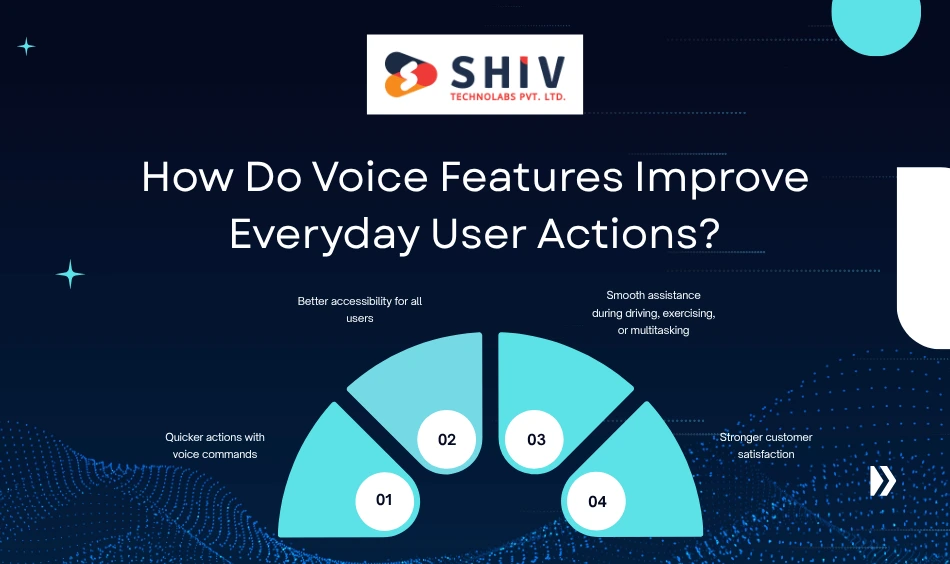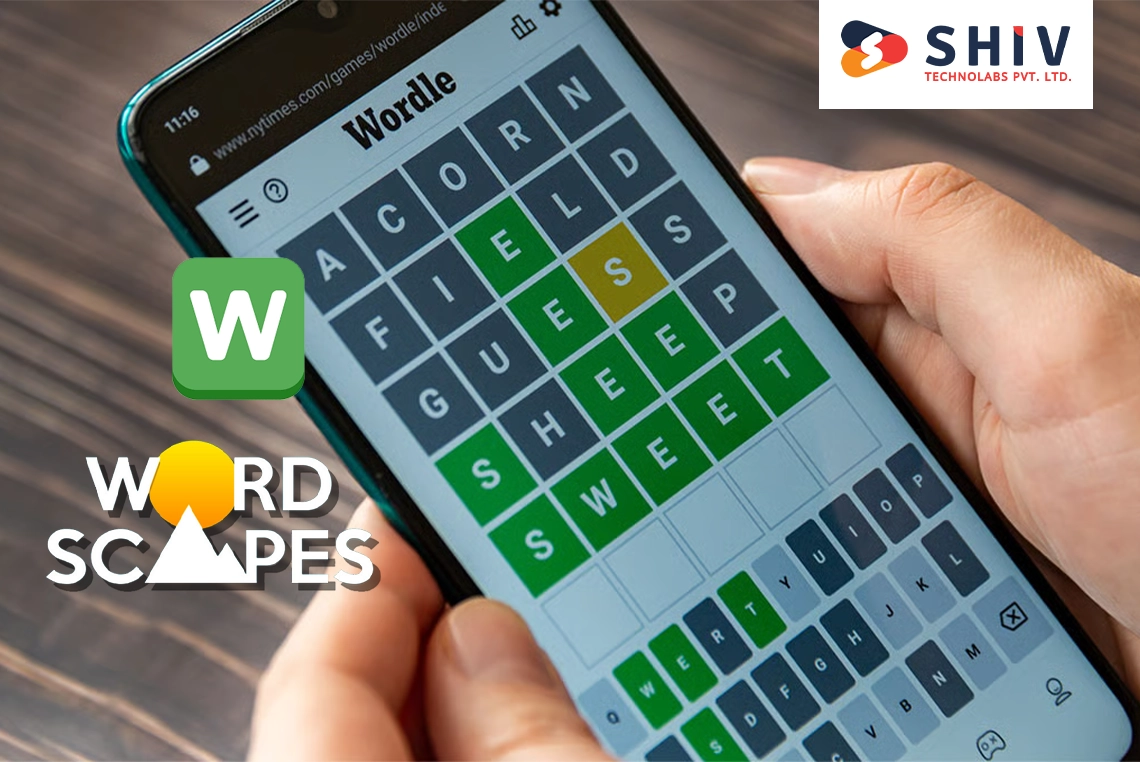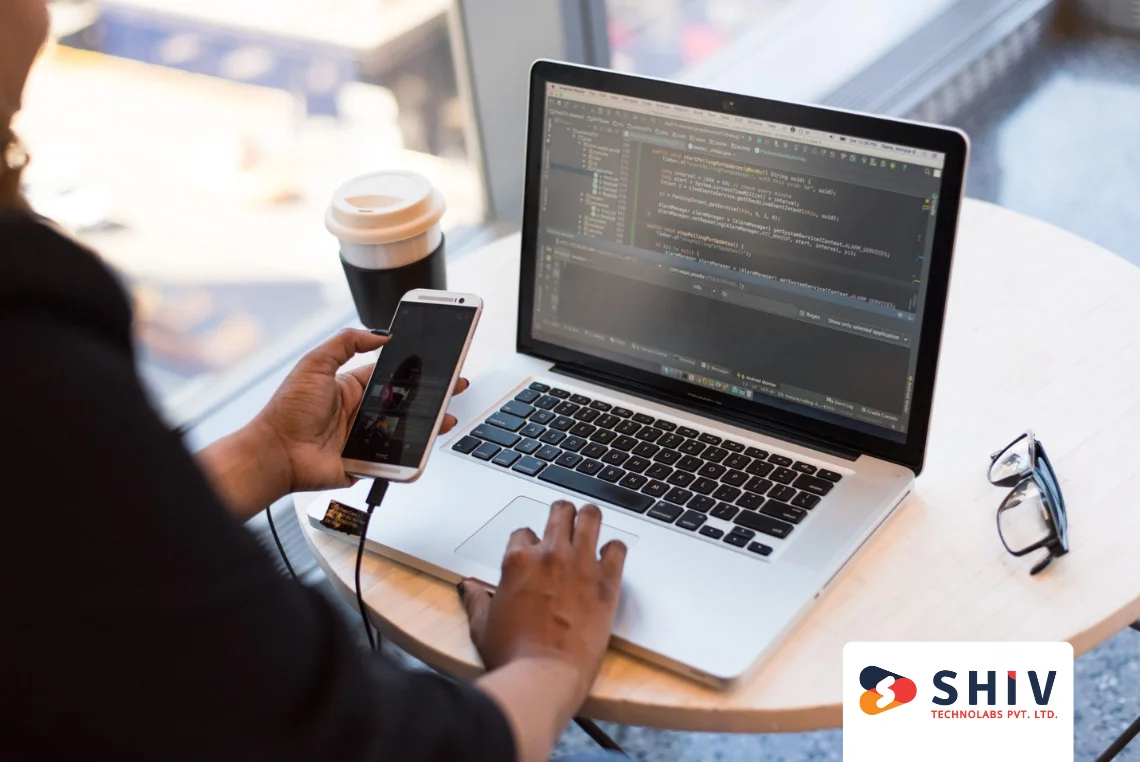Table of Contents
Voice commands are now part of daily digital life, from phones to smart speakers and cars. Many brands look for mobile app development services that add voice to existing journeys, not just as a fancy feature. Users want faster actions, fewer taps, and simple ways to talk to their devices.
This demand pushes companies to adopt voice-activated app development across shopping, banking, health, and support apps. Voice features help people act quickly, find content faster, and move through flows without looking at the screen. They also support users with visual or physical limitations, which makes digital products more inclusive.
At the same time, teams face real technical limits in modern voice systems. Background noise, different accents, and slow devices can hurt the quality of responses. Data security rules also add pressure when voice data contains personal details.
This blog explains how voice technology affects user journeys, the main problems in current systems, and the methods that improve results. You will see how teams handle challenges and convert them into strong digital gains. By the end, you will know where voice apps stand today and how they can support future growth.
Why Are Voice-Activated Apps Becoming a Priority for Businesses?
Companies want smooth, quick interactions that keep users engaged and reduce drop-offs. A well-built speech recognition app helps users complete tasks without typing or clicking through many screens. That speed matters when customers compare brands and expect instant answers.
Mobile users also spend more time on the go, with limited focus on the screen. Mobile app development with voice features allows them to search, buy, or request support with short spoken commands. This suits busy workers, parents, drivers, and anyone who prefers speaking instead of typing on small keyboards.
Voice features also help businesses collect better intent data. Spoken phrases show how people naturally ask for support or products, which guides future product and content planning. Over time, this can lead to smarter suggestions and more personal in-app experiences.
From a brand view, voice support signals innovation and care for user comfort. When customers can speak to an app and receive accurate, quick replies, they feel heard and valued. This feeling improves satisfaction, repeat visits, and overall trust in the digital product.
How Do Voice Features Improve Everyday User Actions?

Voice features make daily actions quicker by turning spoken words into instant results.
Practical benefits of voice inside apps include:
- Quicker actions with voice commands
- Better accessibility for all users
- Smooth assistance during driving, exercising, or multitasking
- Stronger customer satisfaction
What Challenges in Voice Recognition Apps Slow Down User Experience?
Noise, accents, slang, privacy rules, and device limits create most issues in voice recognition.
Noisy Environments
The biggest challenges in voice recognition apps appear when users speak in real, noisy situations. Background sounds from traffic, kids, TV, or office chatter can confuse the system. The app may pick wrong words or ask users to repeat sentences. This breaks the flow and makes people lose trust quickly.
Accent Barriers
Accent and dialect issues add another layer of difficulty. A model trained mostly on standard speech may struggle with local styles. Users from different regions might feel the app “does not understand them,” even when they speak clearly. This gap can harm brand image in global markets.
Casual Language
Slang, mixed languages, and casual phrases also delay correct responses. People rarely speak in perfect grammar, so models must handle short, broken, or blended sentences. If the app fails here, users move back to taps and swipes.
Privacy and Performance
Data privacy concerns sit in the middle of all design choices. Voice data can carry sensitive details about health, finance, or identity. Weak protection or unclear consent flows limit how much data teams can use. On low-end devices, long processing times and poor hardware make responses feel slow. That delay weakens the promise of quick voice support.
Why Do These Voice App Challenges Occur?
Challenges appear because microphones capture all sounds, not just the user’s voice. Models also fail when training data lacks real accents or everyday language.
Noise problems happen because microphones pick up every sound in the space, not just the speaker’s voice. Without strong filters, the system sends a messy signal to the recognition engine. This leads to wrong word detection and odd responses.
Accent and dialect issues come from limited training data. If models do not hear enough diverse speakers, they fail in real markets. Slang and mixed languages are hard because dictionaries and rules rarely match everyday talk. People often shorten words, skip context, or blend English with local tongues.
Privacy risks appear when voice data stays on external servers for long periods. If storage or encryption rules are weak, data can face misuse. Latency problems show up when apps send every request to the cloud. Slow networks, old processors, and heavy models combine to create lag. Users then feel that speaking takes longer than typing.
What Are the Most Effective Voice App Challenges and Solutions?
Teams deal with voice app challenges and solutions through a mix of smart design, stronger models, and clear privacy steps. First, they shape the user journey so the app asks for short, clear commands in key moments. This reduces mistakes and guides people toward phrases that work well.
On the technical side, engineers clean the input signal before any text prediction. They apply noise reduction, echo control, and microphone gain control. This helps the system focus on the main speaker. For accents and slang, teams expand training sets with real speech from many regions and age groups, sometimes working with AI development services to support domain-specific use cases. This makes models more flexible during live use.
Privacy and latency issues require both architecture and policy changes. Some brands keep parts of the model on the device and send only limited data to the cloud. Others add strong encryption, token-based access, and strict retention rules. Clear consent screens and simple settings build user trust and support long-term usage.
Which Technical Methods Improve Voice Recognition Accuracy?
Challenge vs Solution vs Result
| Challenge | Solution | Result |
|---|---|---|
| Noise | Noise-canceling algorithms | Clearer voice input and fewer errors |
| Accent variation | Rich ML training datasets | More accurate detection for all users |
| Slang and casual talk | Continuous model fine-tuning | Better handling of real phrases |
| Latency | On-device or hybrid processing | Faster response and smoother flow |
| Privacy concerns | Strong encryption and access rules | Higher trust and safer voice data |
How Does Voice-Activated App Development Work Step-by-Step?
Voice app development works by setting goals, designing voice UI, building models, and testing across accents and devices.
Step flow:
- Goal setting: Identify tasks where voice adds clear value.
- Voice UI design: Plan prompts, fallbacks, and phrases.
- Build phase: Train or connect the speech engine and map actions.
- Testing: Check accuracy with accents, noise, and slow networks.
- Security checks: Add privacy steps before release.
- Launch & refine: Track live usage and tune models often.
What Core Components Are Required in a Speech Recognition App?

Key parts of a strong speech recognition app include:
- Automatic Speech Recognition (ASR)
- Natural Language Processing (NLP)
- Intent detection and context handling
- Voice-based UI prompts and responses
- Real-time processing and error handling layer
What Tech Stack Powers Powerful Voice Recognition App Development?
Modern voice recognition app development uses a mix of cloud services, language models, and mobile frameworks. On the backend, teams work with speech engines that convert audio to text, then send that text through NLP services. These services find user intent, key entities, and any follow-up questions.
On the client side, apps rely on native or cross-platform frameworks. They handle microphone access, permission flows, and audio streaming. Some brands also add on-device models for faster replies and better privacy. The full stack covers audio capture, text prediction, intent logic, and final action, such as search, booking, or support routing. Good logging tools watch error rates and guide future improvements.
What Tools Do Developers Use for Mobile App Development With Voice Features?
Common tool categories include:
- Cloud speech APIs (Google Cloud, AWS, Azure)
- SDKs for Android, iOS, and cross-platform frameworks
- NLP engines and intent platforms
- Data labeling and model training tools
What Opportunities Can Businesses Capture With Voice-Activated Apps?
Brands gain real value from mobile app development with voice features when they link voice flows to key goals. Voice search can speed up product discovery, while spoken support requests cut wait times. A speech recognition app can guide users during complex steps, which reduces form drop-offs and cart abandonment.
Voice also opens fresh ways to serve different industries. Health apps can record symptoms, banking apps can share balance details, and travel apps can handle quick booking requests. Over time, these gains lead to higher satisfaction, better retention, and more chances for cross-sell or up-sell.
Industry Use Cases of Voice Apps
| Industry | Voice Feature | Impact |
|---|---|---|
| E-commerce | Voice product search and reordering | Faster purchases and higher basket value |
| Banking & Fintech | Balance checks and bill payments | Lower support load and happier clients |
| Healthcare | Symptom notes and appointment booking | Quicker intake and better patient comfort |
| Travel & Mobility | Booking updates and route questions | Fewer calls and smoother journeys |
| Customer Support | FAQ voice bot and ticket status | Shorter wait times and better responses |
Conclusion
Voice apps are moving from trend to core user expectation across many sectors. When teams treat voice as part of the full journey, they create faster, more natural digital experiences. The key lies in careful design, smart model choices, and ongoing fine-tuning based on real usage.
Technical limits and data rules will always exist, but solid methods reduce risk and raise quality. Demand spans e-commerce, finance, health, and more, so early movers gain strong brand recall. With the right mobile app development company like Shiv Technolabs, businesses can start with focused voice features, learn from users, and then grow into richer, more advanced voice experiences over time.
FAQs
What makes voice recognition apps hard to build?
A voice recognition app struggles with noisy rooms, many accents, and fast speech, yet users still expect quick, correct replies.
How can developers make a voice app more accurate?
Developers improve accuracy by feeding recordings into training, cutting noise, and testing models with many speakers and devices.
Who benefits most from voice-controlled app features?
Retail, banking, healthcare, travel, and support teams gain faster search, easier booking, and quick answers through voice commands.
Can a voice app run without the internet?
Some simple commands run on the phone with local models, but rich answers and live data usually still need a connection.
Is a speech recognition app safe for private data?
It is safer when encryption is strong, storage time is short, consent is clear, and recording access stays tightly controlled.
How long does voice-activated app development usually take?
A basic feature may take weeks; a larger product with custom flows and languages can take several months.






















